Fashion Czars
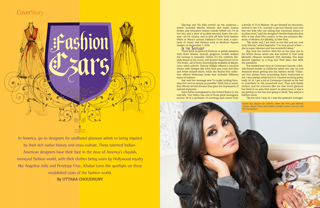
In America, go-to designers for undiluted glamour admit to being inspired by their rich native history and cross-culture. These talented Indian-American designers have their foot in the door of America’s cliquish, moneyed fashion world, with their clothes being worn by Hollywood royalty like Angelina Jolie and Penelope Cruz. Khabar turns the spotlight on these established czars of the fashion world.
Hip-hop star Flo Rida revved up the audience—which included Martha Stewart and Sarah Jessica Parker, pop sensation Ariana Grande belted out I’m So Into You, and a slew of models strutted down the runway—all for charity, and to kick off New York Fashion Week at Macy’s annual Fashion’s Front Row, a spectacle of music and fashion held at Madison Square Garden on September 7, 2016.
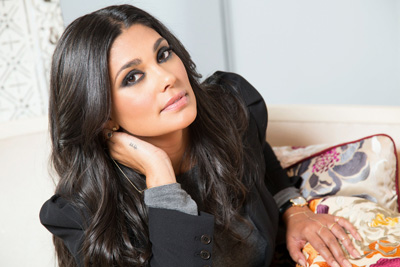
(Left) Rachel Roy, designer for celebrity clients like First Lady Michelle Obama, Sharon Stone, Kate Hudson, Jennifer Garner, Lucy Liu, and Kim Kardashian.
In the Spotlight
There were no peacock feathers or garish sweaters
with three sleeves. Instead, gorgeous models walked
the runway in wearable clothes for the celebrity lifestyle
brand at the iconic, red-starred department store.
The looks—all of them immediately available at Macys.
com—were eclectic. Tommy Hilfiger offered a nautical
theme with designs like navy blue pea coats and blue
and white striped shirts, while the Rachel Roy collection
offered bohemian looks that included different
types of turbans.
Roy said her message was “to make looking feminine-but-cool as simple as possible.” With this in mind, Roy offered several dresses that gave the impression of layered separates.
Roy’s father immigrated to the United States in the mid-60s. “Our father has one of those great immigrant stories. He is a professor of sociology and comes from a family of 13 in Madras. He got himself an education, moved to the U.S., married a six-foot blonde and now has two kids who are taking that American dream to another level,” said the designer’s brother Rajendra Roy, who is the chief film curator at the preeminent Museum of Modern Art (MoMa), in New York.
“My sister and I are both in our 40s and are now truly friends,” added Rajendra. “I’m very proud of her—she is super talented and has wonderful ideas.”
Roy took her brother with her as her plus one to the White House when she was invited to First Lady Michelle Obama’s landmark 50th birthday. The Roys danced together in a long “Soul Train” disco line with the president.
Roy worked part-time at Contempo Casuals, a Seaside-based retailer in California when she was 14, and dreamed about getting into the fashion world. “Glamour has always been something that’s instinctual to me. I was always attracted to it. I started working pretty early. At 14, I got a job at Contempo Casuals as we had to contribute to the household rent. They sold flashy clothes, and for someone like me that loved glamour but lived in an area that wasn’t so glamorous, it was a joy getting on the bus and going to work,” Roy said at a fashion event.
“By the time I was 16, I was the assistant manager. You learn a lot working in retail, but by the time I was done with college, I wanted to move to the other side of fashion,” she said. “My dad told me I had an opportunity to start a business and if I didn’t it would be my fault.”
Roy attended Columbia Union College, now Washington Adventist University, in D.C. before moving to New York, the second biggest fashion capital in the world. She worked as a wardrobe stylist in New York and interned at the Rocawear fashion house. With her hard work ethic and eye for design, Roy quickly became creative director of the women’s and children’s divisions at Rocawear. Indeed, the unforgiving schedule of a creative director is well documented, and many designers have spoken about the difficulty of maintaining a work-life balance while helming a major fashion brand.
Roy put in the long hours and hard work to eventually launch her own eponymous brand in 2004. She has raised two daughters, run her own company, designed, and kept an army of people employed. Roy lives in Los Angeles and has a list of celebrity clients which include First Lady Michelle Obama, Sharon Stone, Kate Hudson, Jennifer Garner, Lucy Liu, and Kim Kardashian.
Roy has worked with Indian factories and textile manufacturers since the start of her business. She launched her Forevermark body chains in India in 2013 during a high profile visit to the country. She revealed that Indian military uniforms and Deepak Chopra were her “constant sources of inspiration.”
“For my designs, I have always been inspired by India. It is inherently who I am. But the thing that I love are men’s designs. There is a looseness and coolness to these clothes that we can apply as women to our lives. And, once we put them on it kind of becomes sexy. I take a lot from the Indian military—a lot of reference from that,” Roy told Vogue India.
Avant garde fashion designers like Roy have taken the liberty to incorporate military inspired design elements into garments with more feminine silhouettes. Her clothes have bright brass details, crisp lines, and sharp angles. Military-inspired fashion ranks high in style as it evokes confidence, strength, and poise. In 1971, for example, Yves Saint Laurent famously introduced his Liberation couture collection, in which he appropriated the prevailing broad shouldered silhouette of military uniforms.
In her bestselling book Uniforms Exposed: From Conformity to Transgression, fashion writer Jennifer Craik writes, “…there is nothing uniform about wearing a uniform.” Craik points out that the 1960s youth counterculture movement transformed uniforms and military motifs into “antiestablishment, rebellious, and revolutionary” symbols. Trendy designers like Roy have tapped into the zeitgeist and been inspired by military uniforms which symbolize heroism, youth, and their rejection of the old and established.
“I take color, probably more than most designers, especially New York designers, and I mix prints in a way that is quite common to our nationality and our culture,” said Roy.
Roy and spiritual guru Deepak Chopra worked together to design T-shirts screen-printed with Chopra’s inspirational quotes. One of Roy’s most popular soft tees carries Chopra’s quote “Keep the stillness inside you” tucked cleverly inside a silhouetted knife, bringing rock n’ roll edge to a dose of enlightenment.
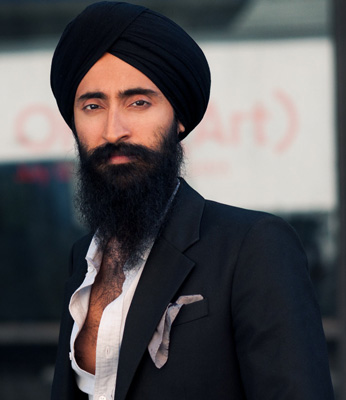
(Left) Waris Ahluwalia of the House of Waris. Maxfield, the iconic boutique-art gallery from L.A. decided that Ahluwalia had an aesthetic all his own. Maxfield placed a large order with the House of Waris for elaborate diamond jewelry which sold out quickly, laying the foundation for Ahluwalia’s commercial success.
Intrepid Explorer
Indian-American designer Waris Ahluwalia is a
true Renaissance Man. Along with acting and jewelry
design under his label House of Waris, he has created
stylish pop-up restaurants, written for the highbrow
Paris Review, become the first Sikh model in a national
Gap ad campaign and collaborated with a variety of
fashion companies, from French clothing brand A.P.C.
to eyewear label Illesteva.
He has also acted as an intrepid maritime explorer in Wes Anderson’s film The Life Aquatic with Steve Zissou, and as a debonair gangster in Deepa Mehta’s Indo-Canadian crime drama Beeba Boys.
“The way people experiment with drugs and sexuality, I’ve experimented with careers,” said Ahluwalia, 42, on the sidelines of a film screening in Tribeca, in New York.
“I am a die-hard explorer. I say ‘yes’ to discovering new interests and making all the passions in my life work together. I don’t think inside the box because I don’t even know where it is. I wouldn’t know how to do it any other way,” Ahluwalia said with a disarming smile.
Ahluwalia is full of interesting contradictions. The much photographed model-designer never smiles in snapshots, keeping a straight poker face. However, when you meet him in person the one thing that strikes you is his hundred-watt smile. “I’d rather be smiling in real life. I think that’s a much better balance,” he is fond of telling bewildered journalists and photographers.
Ahluwalia moved from Amritsar in Punjab to New York with his family when he was five. He still lives in Manhattan, but travels frequently to Italy and India. The designer works with craftsmen in Rome and Rajasthan, from goldsmiths to diamond setters who once made the crests for royal families, to create exquisite jewelry for modern day royalty: Wall Street bankers and Hollywood’s reigning queens.
“India is the land of my birth and is engrained in my soul. It’s everything I do,” said Ahluwalia, who takes a leaf out of India’s princely design diary which has produced treasures such as the famed Patiala necklace by Cartier.
The House of Waris, built on Ahluwalia’s prodigious talent and ambition, caught the eye of Tommy Perse’s iconic boutiqueart gallery Maxfield. The high-end L.A. retailer, which exudes sophistication, from vintage vitrines filled with antique Cartier and H e r m è s to clothing racks of impeccably curated designer collections, decided that Ahluwalia had an aesthetic all his own and was a rising talent to be watched. Maxfield placed a large order with the House of Waris for elaborate diamond jewelry which sold out quickly, laying the foundation for Ahluwalia’s commercial success.
Ahluwalia’s impeccably tailored suits worn with his custom pink desert boots have landed him on numerous best-dressed lists. As one of Vanity Fair’s 2010 International Best-Dressed List’s honorees, Ahluwalia described his style as “East meets West.”
The one thing he wears every day is a turban. “My turban is always black, but it doesn’t have to be. My uncle matches his [turbans] to his ties. And I’ll either be in a suit or jeans, or in the summer, linen. I look at men’s fashion as a uniform,” Ahluwalia told The Wall Street Journal.
Ahluwalia is not the only well-known Sikh model in the United States. Turban-wearing Sonny Caberwal turned heads as a poster boy for fashion giant Kenneth Cole. Ahluwalia and Caberwal—who co-owns the Tavalon Tea Bar in New York—stand in sharp contrast to New York’s ubiquitous, clean-shaven blonde models.
Despite the pressure to “fit in” with image-obsessed, 9/11-scarred America, Ahluwalia and Caberwal have not discarded their turbans and beards. Ahluwalia says he’s grown accustomed to multiple bag searches, invasive patdowns and incessant swabbing but draws a line at airport security officials asking him to remove his turban. In February this year, Ahluwalia nearly missed Fashion Week in New York after Aeromexico kicked the Sikh designer off a flight when he refused to remove his turban during a security screening.
Two days after he was barred from boarding the plane, Ahluwalia’s story made international headlines. Aeromexico then offered the New York designer a n o t h e r ticket and told him he wouldn’t have to remove his turban—but Ahluwalia refused to accept it. He demanded that the airline issue a public apology and commit to retraining its staff. In a big victory for the Sikh community, Aeromexico finally issued an apology to Ahluwalia and promised to retrain its staff.
“It makes a huge difference when a famous New York designer like Waris Ahluwalia stands up and says ‘no’ to discrimination. As a successful designer and man of fierce integrity, Waris is a role model,” said Sikh American Raunak Singh who is an executive with luxury retailer Bergdorf Goodman, working in men’s visual merchandising.
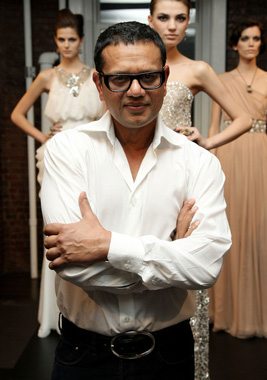
(Left) Naeem Khan, 58, is one of the biggest names in America’s cliquish, moneyed fashion world. Hollywood stars vie for his dazzling gowns which do battle for domination of the Oscars’ red carpet with Giorgio Armani, Donna Karan, and Oscar de la Renta’s haute couture gowns.
Shooting Star
When First Lady Michelle Obama wore Naeem
Khan’s gold strapless gown adorned with sterling
silver-plated appliqués to her first White House state
dinner in November 2009, the Mumbai-born designer
said it “changed his life.” It was a moment in which
you could feel fashion’s center of gravity shift in Khan’s
direction. The triumph helped Khan, who had migrated
to America when he was a struggling 20-year-old, answer
a key question: who am I?
The grandson of a Mumbai textile entrepreneur who specializes in elaborate embroidery, Khan moved to the United States to study. The 20-year-old was thrust into the high-paced world of American fashion when he became an assistant for famous minimalist designer Roy Halston, whom he met through his father. When he apprenticed for Halston, Khan absorbed the ethos of modern restraint, and the secrets of draping and cutting fabric to create a clean, elegant, timeless silhouette. Khan’s trademark style was nurtured between the aesthetically opposite worlds of his father’s grand opulence and Halston’s sleek minimalism.
“When I was designing Mrs. Obama’s dress, half of me was saying, ‘What would Halston do?’ The other half was saying, ‘Be who you are!’ Halston, me, America, India—it’s been such a great combination. This is what makes me who I am, with the clean lines I learned from Halston and complicated, Indian, over-the-top, Bollywood traditions. There’s a lot of confusion in India with design and color, and I have just taken it, simplified it, cleaned it,” Khan told reporters.
Khan, 58, is one of the biggest names in fashion, a celebrity in America’s posh fashion world. Hollywood stars vie for his dazzling gowns which battle for domination of the Oscars’ red carpet with Giorgio Armani, Donna Karan, and Oscar de la Renta’s haute couture gowns. The Naeem Khan label was launched in 2003 and has since stormed Bergdorf Goodman, Harrods, and Saks Fifth Avenue. His luxurious collection consists of impeccably cut dresses, sophisticated gowns, and chic separates, all embroidered by hand.
Khan’s glittering fan base of stars and jet setters includes Beyoncé, Penelope Cruz, Lea Michele, Taylor Swift, Lady Gaga, Jennifer Lopez, Sarah Jessica Parker, Emily Blunt, Kate Beckinsale, Katy Perry, and First Lady Michelle Obama.

(Left) When Khan learnt through the Make-A-Wish Foundation that 11-year-old cancer patient Trinity Faith Moran lived in dress-up clothes, high heels, and had a runway dream, he made it possible for Trinity to fly to New York for a fashion week experience with super models.
Despite the hectic pace of his life and the size of his business empire, Khan never stops being human. Through the Make-A-Wish Foundation, he learnt that 11-year-old cancer patient Trinity Faith Moran lived in dress-up clothes, high heels, and had a runway dream. The First Lady favorite quickly ensured that Trinity could fly to New York for a fashion week experience with super models.
“In walks this tiny, frail girl—so pretty, so sweet. And I was so happy to see her, but so sad inside,” said Khan, who arranged in February 2016 for Moran to participate in his Fall fashion show.
Khan sprawled on the floor with Moran and sketched three dresses loosely based on the designs featured in his collection. The two worked together, choosing her favorite color and cut, and adjusting the design to conceal the medication strapped to her chest. Khan’s team worked through the night to handstitch her custom couture gown.
Kimberly Rasmus, Trinity’s mother, told reporters, “Mr Khan and his team treated Trinity like she was a world-class model. It made her so happy!”
Overcoming a Mindset
Indian designers say their assimilation in the largest
fashion city in the world has come as a sort of trial
by fire. For every Naeem Khan who has skyrocketed to
fame, there are hundreds who don’t even glimpse an
internship at an American fashion house—let alone
find the dollars to produce their own line of clothing.
Indian immigrants have flourished in science, finance,
and medicine, but seldom do designers say their parents
were supportive of their choice to study fashion
design. New York Fashion Week has featured only a
handful of Indian origin designers.
Those who have studied design will tell you their lack of fashion experience wasn’t the only challenge. “As the only Indian among 12 interns, my bosses were skeptical of my abilities. I was Indian, and they kept questioning that,” said Rajat Singh, who goes to class Tuesday through Thursday and to his internship Friday through Monday. “I would overhear them talking, ‘Oh, he might not have the American style sensibility.’ But I outlasted my peers.”
Indian designers have painstakingly built their reputation on talent and hard work.
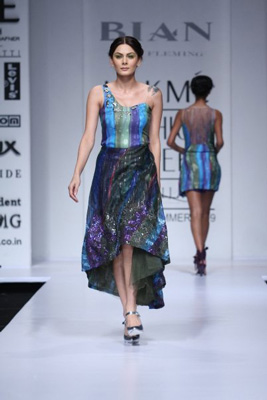
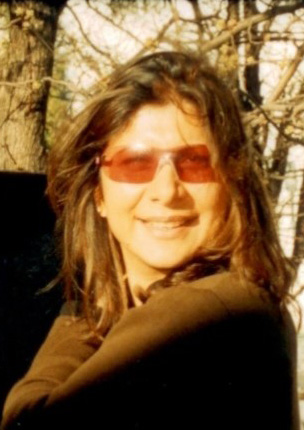
(Left) Gurpreet Pia Fleming and a couple of her creations. (Photos: Facebook.com/ Bian)
Tailoring Tradition
Delhi-born Pia Fleming studied design at NIFT in India and Fashion Institute of Technology in New York. She set up her own factories doing design work for Badgley
Mischka, Haute Hippie, and Kenzo before launching her own
luxury prêt-à-porter Bian label. She pays attention to details like cuts, folds, layers,
embroidery, and beading. Her beautifully made clothes are targeted at the world's most fashionable global women.
Incorporating crafts from her heritage, Fleming sells the chicest bespoke pieces from day to evening dresses from her studio in Manhattan. She caters to America's wealthy elite by giving them personal attention at her studio and creating special pieces with a touch of luxury for occasion dressing. Bespoke fashion is what Fleming offers in addition to working with stylists and celebrities. "I will continue to keep the operations small so that I can be consistent with style and high quality," said Fleming.
“My clothes are different from Theory, Vince, and Helmut Lang. What I bring is the element of crafts from India. Even Americans who haven’t been exposed to the East are appreciating the “wow” factor in our embellished clothes where the colors are bold,” said Fleming, who creates feminine, flirty dresses, glamorous embellished jackets, outerwear in luxurious furs and leathers, and memorable red carpet dresses.
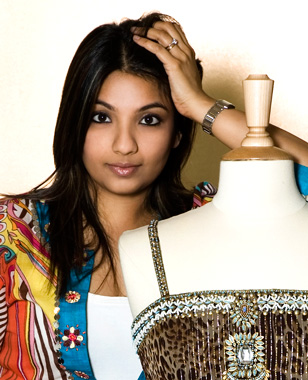
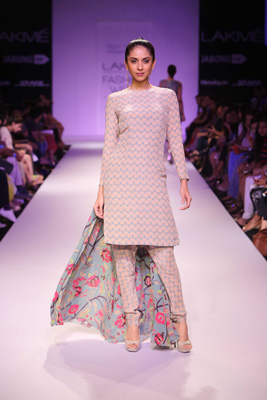
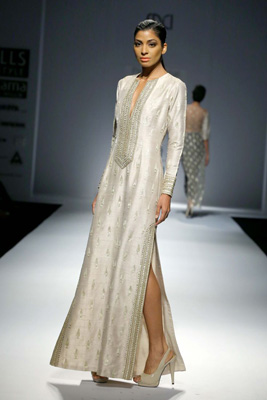
Payal Singhal’s dresses have been hailed by Vogue as “gorgeous dresses” for downtown New York with just enough of the genuine Indian magic. Here are two of her creations.
Today’s Indian-American designers don’t wear their “otherness” on their sleeves as did the wave of Japanese designers like Issey Miyake and Yohji Yamamoto, who took the West by storm in the ‘80s with avant-garde designs. Payal Singhal’s blend of East and West, and modern takes on classic looks, are aimed at a broad audience. Like Fleming, Singhal does her manufacturing out of India and sells in America, India, and the Middle East. Her dresses have been hailed by Vogue as “gorgeous dresses” for downtown New York with just enough of the genuine Indian magic.
Singhal’s best-seller is her Indo-Western ready-to-wear occasion line. “I never tried consciously to create something that was Indo- Western,” said Singhal, who has trained at Parsons and the Fashion Institute of Technology in New York.
“I wasn’t trying to make something that was a dress and an Indian outfit—it happened instinctively. I had American customers saying, ‘Can I buy this without the leggings?’ And, I had Indian customers saying, ‘Can I wear this as a dress as well as an Indian outfit by adding the leggings?’ My clothes are embroidered and made of high-quality fabrics, silks, and georgettes. You get great value for money,” said Singhal, who works like a Trojan to do four trunk shows a year in the United States.
“Our trunk shows have been super successful. Our customers come to the shows to shop,” said Singhal, who stole the show in Misha Nicole’s Global Runway’s Night Out in New York. The fashion show also featured Naeem Khan and Padma Lakshmi. Singhal’s collection has been snapped up for the Misha Nicole women’s retail concept store in SoHo, New York.
Color Palette
Indian-American designers have
also been bold and creative in their use
of the color palette. They have been
using lighter neutrals in the United
States and Europe punctuated by
warmed-up accent colors from Asia,
especially India.
“One of the trends very much in evidence now is that ethnic colors are bigger than ever. The yellows and the turquoise have been so successful. Everyone says the country to watch for color is India. American designers of Indian origin have a special eye for color,” said Bobbie Schlesinger, spokesman for the Color Marketing Group (CMG), the world’s leading authority on color trends.
“As globalism continues to inspire our love for ethnic accent colors, they’re coming to us from India, China, and Latin America. From Moroccan reds and glowing oranges, to lots of turquoise. Already here in fashion and home design, these ethnic accents will show up as “punch” colors in hotels and retail environments—often paired with rich browns as neutrals.”
Virginia-headquartered CMG, which tracks and forecasts color trends, has rarely been wrong in 43 years. According to CMG, India-inspired turquoise, glowing oranges, rosy pinks, and sunny golden yellows are “punch” colors for the fashion industry.
“The turquoise and intricate embroidery in this scarf is breathtaking. It is a work of art,” said Sandra Wiskari, senior production associate of textiles reproduction at the Metropolitan Museum of Art, as she runs her hand over a luxurious Indian silk scarf retailing at the Met store.
“We do love our colors and the fashion industry is getting a lot more color hungry,” said Singhal.

(Left) Kiran Rai, and her trendsetting scarves and wraps: Sir Alistair Rai label—featured in a German style magazine. (Photo: Mike Ferrari)
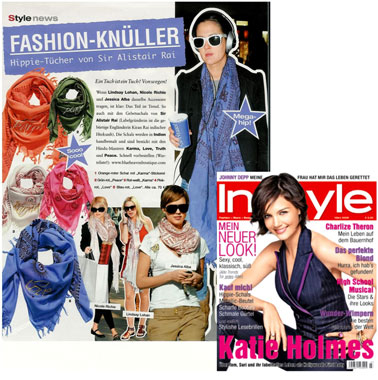
Gaining a Foothold
As little as three years ago, stores in Europe
and America were hoity-toity about the Made
in India label. Western designers would buy
bagfuls of Indian textiles, get embroidery or
mirror work done on them, and then whisk
them overseas to be stitched and sold under
Western labels.
“There was an awkwardness in the couture business about Indian stuff. When goods carried the India or China labels, buyers went “Oh.” When it came to couture, people wanted French, Italian,” said Fleming. “But people are beginning to look at the India label differently. China is good for volume and prices but India is great for crafts and design aesthetics. American stores have made that acceptance,” said Fleming.
Indian-American designer Kiran Rai started venting against George Bush and the war in Iraq by cranking out peacenik T-shirts with Gandhi’s passive resistance messages. “In late November 2005, I just started rolling out this stuff from the garage in my house,” said Rai, who lives in a sprawling Spanish-style house in Phoenix.
“Soon we were selling nearly 5,000 T-shirts a month. Celebrities like Drew Barrymore and even Aishwarya Rai wore my mantra scarves. They are basically Buddhist and Hindu prayer wraps with love and peace embroidered on them. We have a huge celebrity following for those,” said the designer who is surprised by her Hollywood fan base.
“I did start this as a reaction to George Bush and the Iraq war but it has really brought me a lot of prosperity,” Rai laughed. “It was the right thing at the right time. Everything just clicked for ‘Sir Alistair Rai’ to make it work,” said Rai in a reference to her whimsical label.
Liberal Hollywood snapped up Rai’s vintage feel message-oriented clothes and accessories. Ricky Martin, Drew Barrymore, Angelina Jolie, Matthew McConaughey, Kate Hudson, Jessica Alba, and Jennifer Aniston have been seen wearing her designs.
Rai crossed the line of fashion stardom and profitability with her beatnik Sir Alistair Rai label and finally launched her high-end Kiran Rai label in 2010.
“We don’t do as many T-shirts but we do the mantra wraps. It is definitely our biggest seller and every season we change it. That is our staple—I don’t think I will ever go away from it,” said Rai.
Rai sources and manufactures out of India for the Sir Alistair Rai label, but her high-end Satya Rai line is made in New York’s bustling Garment District.
“I think that is good, too, because I am also American and the economy here has been hit hard. There is nothing like India for textiles. I have gone everywhere from Europe to Turkey, but in India they just don’t get it wrong,” said Rai.
“The India-is-cool trend has waxed and waned for decades. It goes back to The Beatles, Ravi Shankar—I guess we are very lucky because it started a few years ago and hasn’t left. I think everybody is using the Indian aesthetic today in their work. It is not just the eight or ten of us—it is definitely everybody. When I look around I see so much of the India-inspired aesthetic everywhere,” said Rai.
Indian-American designers have succeeded in the hard-as-nails fashion industry as they are really passionate about color, fabric, and making perfect clothes. “How do you set a proper sleeve? How does a fabric perform? We concentrate on the art of making clothes as opposed to making everything cookiecutter. We have an obsessive fascination for old world glamour,” said Singhal. “We’ve grown up with similar cross-cultural references and Indian inspirations.”
Uttara Choudhury is editor, North America for TV 18’s Firstpost news site, contributor to Forbes India and consulting editor for BrainGain Magazine.
Enjoyed reading Khabar magazine? Subscribe to Khabar and get a full digital copy of this Indian-American community magazine.
blog comments powered by Disqus












